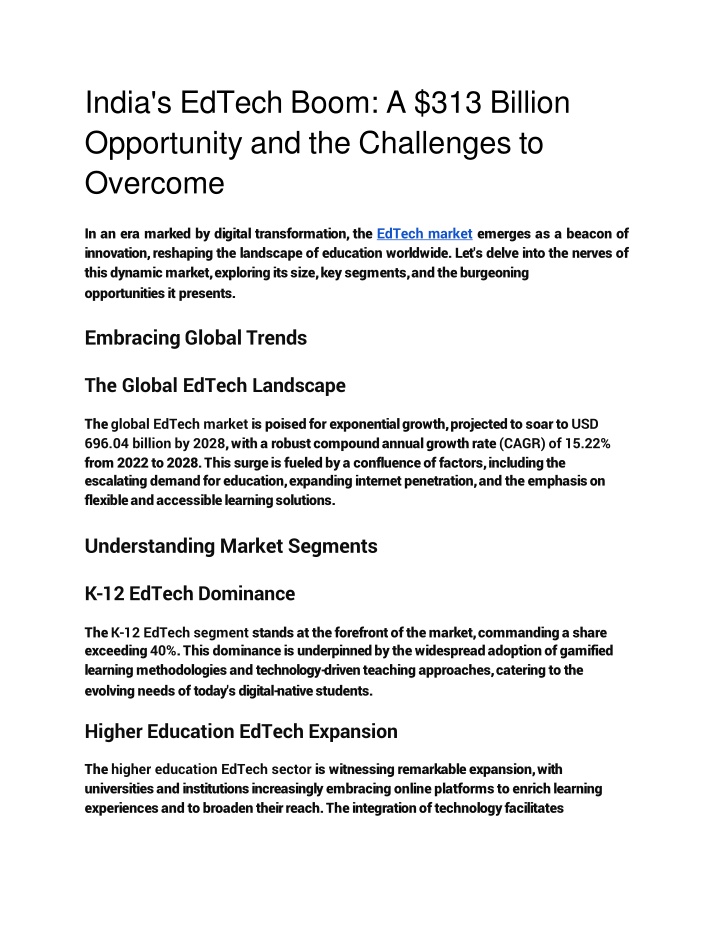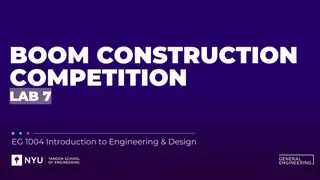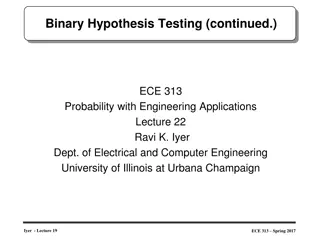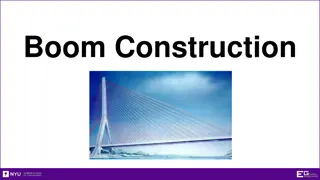India's EdTech Boom A 313 Billion Opportunity and the Challenges to Overcome
The global EdTech market is poised for exponential growth, projected to soar to USD 696.04 billion by 2028, with a robust compound annual growth rate (CAGR) of 15.22% from 2022 to 2028. This surge is fueled by a confluence of factors, including the escalating demand for education, expanding internet penetration, and the emphasis on flexible and accessible learning solutions.n
Download Presentation

Please find below an Image/Link to download the presentation.
The content on the website is provided AS IS for your information and personal use only. It may not be sold, licensed, or shared on other websites without obtaining consent from the author.If you encounter any issues during the download, it is possible that the publisher has removed the file from their server.
You are allowed to download the files provided on this website for personal or commercial use, subject to the condition that they are used lawfully. All files are the property of their respective owners.
The content on the website is provided AS IS for your information and personal use only. It may not be sold, licensed, or shared on other websites without obtaining consent from the author.
E N D
Presentation Transcript
India's EdTech Boom: A $313 Billion Opportunity and the Challenges to Overcome In an era marked by digital transformation, the EdTech market emerges as a beacon of innovation, reshaping the landscape of education worldwide. Let's delve into the nerves of this dynamic market, exploring its size, key segments, and the burgeoning opportunities it presents. Embracing Global Trends The Global EdTech Landscape The global EdTech market is poised for exponential growth, projected to soar to USD 696.04 billion by 2028, with a robust compound annual growth rate (CAGR) of 15.22% from 2022 to 2028. This surge is fueled by a confluence of factors, including the escalating demand for education, expanding internet penetration, and the emphasis on flexible and accessible learning solutions. Understanding Market Segments K-12 EdTech Dominance The K-12 EdTech segment stands at the forefront of the market, commanding a share exceeding 40%. This dominance is underpinned by the widespread adoption of gamified learning methodologies and technology-driven teaching approaches, catering to the evolving needs of today's digital-native students. Higher Education EdTech Expansion The higher education EdTech sector is witnessing remarkable expansion, with universities and institutions increasingly embracing online platforms to enrich learning experiences and to broaden their reach. The integration of technology facilitates
interactive and engaging learning environments, empowering students with any- time, anywhere access to educational resources. Spotlight on India Promising EdTech Landscape India emerges as a beacon of promise in the EdTech realm: Market Size Surge The EdTech market size in India is poised for exponential growth, projected to reach USD 313 billion by FY30, boasting a robust CAGR of 10.6% from 2023 to 2030. This surge underscores the nation's fervent embrace of digital learning solutions and the burgeoning demand for accessible and quality education. Fragmented Market Share The EdTech landscape in India is characterized by a diverse array of players, encompassing both established entities and burgeoning startups vying for market supremacy. This competitive ecosystem fosters innovation and drives the evolution of cutting-edge educational technologies. Driving Forces and Challenges Catalysts for Growth Several factors propel the growth of the Indian EdTech market: Large and Young Population: India's demographic dividend, characterized by a sizable and youthful population, fuels the demand for educational solutions tailored to diverse learning needs. Increasing Disposable Income: The burgeoning middle-class populace, coupled with rising disposable incomes, augments the propensity to invest in quality education and digital learning tools. Government Initiatives: Government initiatives aimed at promoting digital literacy and fostering a culture of digital learning further catalyze the expansion of the EdTech landscape.
Navigating Challenges The EdTech sector grapples with multifaceted challenges: Quality and Consistency: Ensuring uniform standards of education and maintaining consistency across diverse EdTech platforms remains a pressing concern. Bridging the Digital Divide: Addressing disparities in access to technology and infrastructure is paramount to ensuring equitable access to digital learning solutions. Skilled Workforce: Bridging the gap in skilled educators proficient in leveraging technology for pedagogical innovation poses a significant hurdle in realizing the full potential of EdTech initiatives. Conclusion The EdTech market stands at the nexus of innovation and transformation, poised to redefine the future of education on a global scale. By embracing innovation, fostering inclusivity, and navigating challenges with resilience, the EdTech sector can pave the way for a more equitable, accessible, and impactful educational landscape. FAQs Q1. What distinguishes EdTech from traditional educational approaches? Answer: EdTech leverages digital technologies to enhance learning experiences, offering interactive, personalized, and accessible educational solutions tailored to diverse learning needs. Q2. How does EdTech contribute to educational inclusivity? Answer: EdTech initiatives strive to bridge the digital divide by providing equitable access to educational resources and opportunities, empowering learners from diverse backgrounds to access quality education.
Q3. What role does government policy play in shaping the EdTech landscape? Answer: Government initiatives aimed at promoting digital literacy, investing in infrastructure, and fostering partnerships with EdTech stakeholders are instrumental in catalyzing the growth and innovation of the EdTech sector. Q4. How can educators leverage EdTech to enhance teaching and learning outcomes? Answer: Educators can harness EdTech tools to create interactive learning environments, personalize instruction, track student progress, and facilitate collaborative learning experiences, thereby enhancing engagement and fostering academic success. Q5. What are some emerging trends shaping the future of EdTech? Answer: Emerging trends in EdTech include the proliferation of immersive technologies like virtual reality (VR) and augmented reality (AR), the rise of adaptive learning platforms, and the integration of data analytics to personalize learning pathways and optimize educational outcomes.























